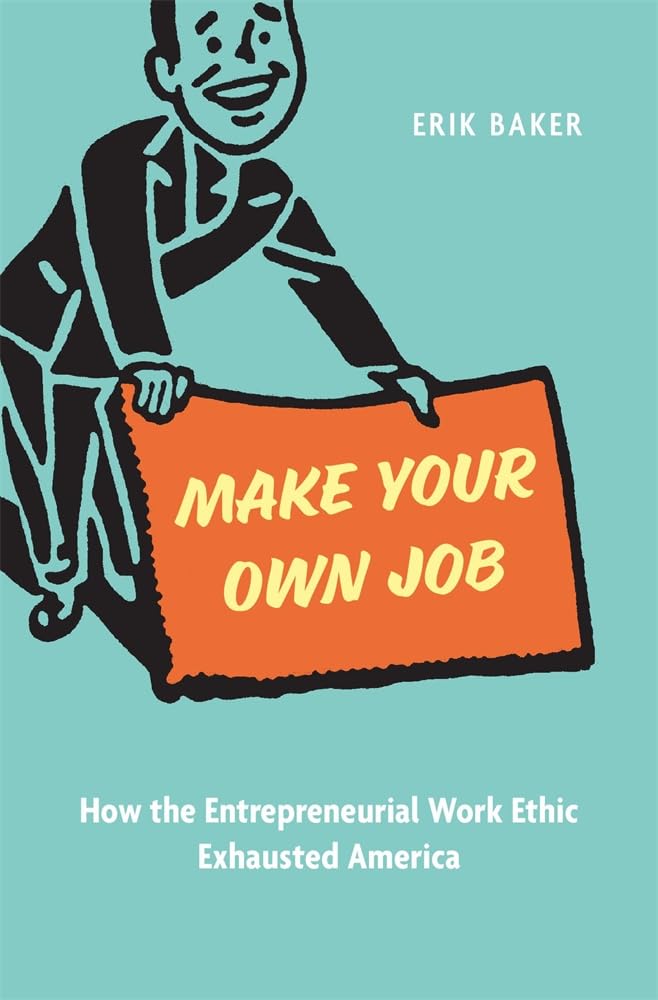
It takes a brave person to challenge one of the consensus beliefs of a society, but that is precisely what Erik Baker does in, Make Your Own Job: How the Entrepreneurial Work Ethic Exhausted America. His book puts firmly in its sights ‘the idea that everyone should strive to be entrepreneurial’ which he promotes to the status of a ‘work ethic’ that ‘promises material rewards and intangible benefits’ but drives a ‘spike in burnout and despair’ and an ‘epidemic of exhaustion’ (page 3). The book gives a grand historic sweep of corporate America from Henry Ford’s adoption of the ‘New Thought’ Movement in the 1920s to the ‘Great Resignation’ of the 2020s.
At each stage on this industrial timeline the thought-provoking question is how entrepreneurial strategies and activities bred an entrepreneurial work ethic which became so embedded that it was adopted as assumed wisdom for all, rather than the choice of a few. His issue isn’t with entrepreneurs but with ‘our collective commitment to entrepreneurialism’ which he suggests isn’t helping because ‘it enjoins us to work more intensely than we need to and leaves us feeling devoid of purpose when we don’t have work, or the right kind of work, to do’ (page 3). But I couldn’t help replying, ‘Really?’ Is the core proposition proven that entrepreneurial work and making your own job leads to an innate drivenness and risks profound emptiness not experienced by those who work in corporate structures? This doesn’t take away from the fascinating content but does add a warning label that the historical overview needs processing and applying.
One strength in the book is the rich historical detail that deconstructs the beliefs of industrialists, politicians and thought leaders and shows how strong an influence they have had on our attitude to doing work we love – a phrase that is common on co-working walls but is attributed to Elizabeth Jones Towne in the 1900s with phrases such as ‘A man’s success is measured…by the amount of LOVE he feeds his work with’ (page 33). What the book left me wondering however was what other work ethics were at play and how they also impacted our view of entrepreneurial endeavour. Puritan New England is mentioned as an ethic that denied ‘desire and selfhood’ (page 33) but is quickly dismissed as a ‘baleful, anachronistic influence’ in contrast to the success-orientated New Thought luminaries, such as Towne (page 33). If religion is referenced at all it is in a thread throughout the book which separates the new mechanical ideas of business efficiency from the ‘extra endowment’ of ‘foresight – the philosophic power of understanding the complex flux of the varieties of human societies’ (page 56). The idea of a ‘divine energy’ which ‘releases in man a power and a force beyond human capacity to generate’ (page 87) was made popular by Norman Vincent Peale, author of The Power of Positive Thinking in 1952. The glaring gap is the teaching from religion about the purpose of work as a gift from God and part of his eternal purposes. If work is about channelling our own energies, then it is not surprising that we will get exhausted. But when we work with all God’s energy working powerfully in and through us (Philippians 2:13), then we will be restored and enjoy meaningful work and Sabbath rest!
The book is a detailed survey from an almost exclusively USA perspective. This shouldn’t be surprising as the title gives due warning of which side of the pond it’s placed, but it did mean that some transatlantic translation is necessary. The experience of the Blitz and ‘labour’s not working’ election posters are just two amongst many British cultural moments that shape our attitude to work and entrepreneurship. The description of Sun Belt entrepreneurs as a ‘Promethean master race’ full of ‘good-looking, healthy, superior Americans’ (page 114) is slightly at odds with the picture of people in 1960s Britain – the creative energy was there but it looked very different and shaped an entrepreneurial work ethic very differently. By its nature, the book focuses on some aspects of corporate America which help tell the story of an entrepreneurial work ethic, but I’m sure many other threads to that story could be added. One striking insight is how much influence Harvard Business School had in shaping the corporate mindset and several professors are frequently quoted. Since the author is a lecturer at Harvard it is less unexpected but still noteworthy, especially as the influence from and on academic institutions is in a liminal phase right now.
The later chapters describe the entrepreneurial philosophy of Steve Jobs and the rise of ‘philosopher-kings’ (page 163) who thought very differently from the academics in the elite east coast business schools. In contrast to the accepted wisdom, Steve Jobs focused on the intersection of the arts and the sciences, and the conservative executives of middle America emphasised ‘the analogy between the entrepreneurial firm and the patriarchal family; the entrepreneurial leader as a paternal authority; the entrepreneurial work ethic as an expression of faith in God and country’ (page 164). The contrast in the ways the power of entrepreneurialism is applied in the lecture halls of Harvard, the Silicon Valley offices of Apple and the training institutions set up by business leaders in St Louis, is a helpful reminder of how people shape very similar ideas with very different worldviews.
As our narrative timeline propels towards the present there is a fascinating focus on social entrepreneurship – a current phenomenon well worth studying in its historical context. If the outworking of the entrepreneurial spirit’s drive is exhaustion and the enforcing of ‘unforced enthusiasm’ amongst those who ‘survived the cut’, are in ‘the winners circle’ and working ‘extreme jobs’ (page 189), there is a useful exploration of how gain of other types of value legitimises entrepreneurial purpose. One conclusion, which I’m a big proponent of and is the focus of my research, is to reevaluate what we mean by value and what we are therefore applying our entrepreneurial energies to generating. But the conclusion that seems more favoured here is that it is inevitable to create ‘duds of the new economy’ as ‘a significant fraction of the population was condemned to be economically valueless’ (page 231) while the elite are just plain exhausted.
The ongoing tension is in the starting hypothesis. If the entrepreneurial work ethic is causing exhaustion because it ‘leaves us feeling devoid of purpose when we don’t have work, or the right kind of work, to do’ (page 3) what alternative would give meaning and renewing energy? The answer, which many theologians not mentioned in this book have suggested over the centuries, is to find purpose in serving an entrepreneurial God who is creative, redemptive and holistically entrepreneurial.
Would I recommend this book? Yes, to a specific audience who have interest in the story of entrepreneurship or to an engaged audience who are willing to apply the history from a land far away, and in some parts a time long ago, to the present challenges of work. Don’t expect ready answers to exhaustion, but do explore the many reasons in the history of corporate America why doing what we love has become the new religion at work.
‘Make Your Own Job: How the Entrepreneurial Work Ethic Exhausted America’ by Erik Baker was published in 2025 by Harvard University Press (ISBN: 978-0-67-429360-1). 337pp.

Andrew Baughen is a management consultant specialising in mapping the whole value of organisations. He researches business worldviews and teaches ethics at Bayes Business School and is also an associate minister at St Margaret’s Lothbury.
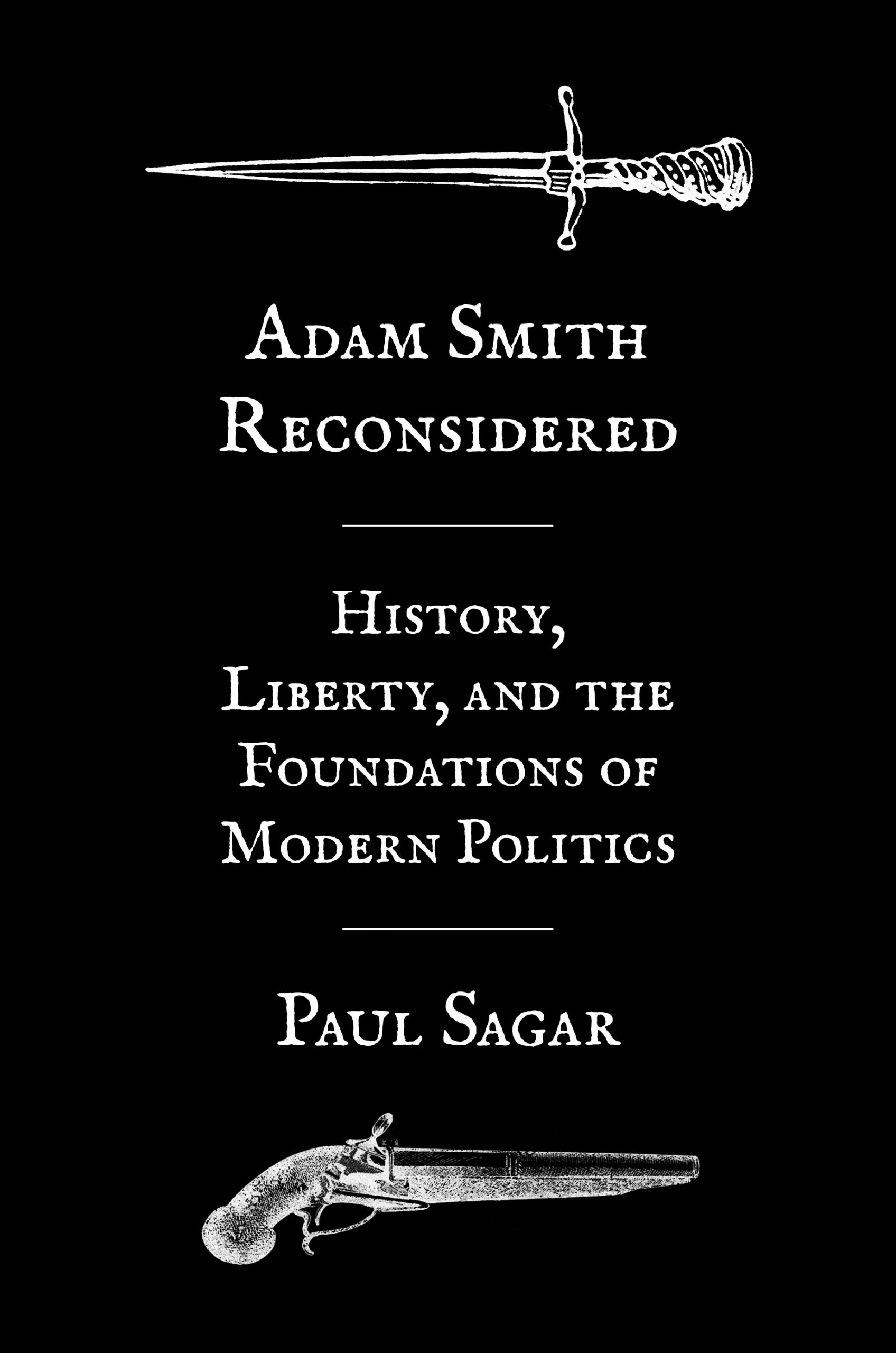
Paul Sagar’s Adam Smith Reconsidered: History, Liberty, and the Foundations of Modern Politics offers an ambitious reinterpretation of Adam Smith’s intellectual legacy. The book challenges prevailing accounts of Smith’s political and economic philosophy, particularly the assumption that Smith harbored fundamental anxieties about market-driven societies. Instead, Sagar argues that Smith’s concerns lay less in moral corruption and more in the political dangers posed by commercial societies. The book is an essential contribution to modern debates on Smith, offering a historically grounded yet philosophically nuanced perspective.
Sagar organizes his study into five chapters, each tackling a specific dimension of Smith’s political thought.
Sagar begins by dissecting what he terms the ‘standard model’ of Smith scholarship. He critiques the widespread belief that Smith’s four stages theory constitutes a form of conjectural history. Instead, he argues that Smith used it as an economic model rather than a predictive framework for historical development (page 20). Sagar contends that many commentators have wrongly assumed that Smith believed in a linear progression of societies towards commercialism.
The second chapter examines Smith’s conception of liberty, moving beyond the standard republican interpretation. Sagar argues that Smith’s understanding of liberty aligns more closely with the notion of nondomination, derived from historical conditions rather than abstract philosophical principles (page 72). He differentiates Smith’s stance from contemporary republican theorists such as Quentin Skinner and Philip Pettit, suggesting that Smith saw the rule of law—not civic virtue—as the key mechanism for securing liberty (page 85).
One of the book’s most provocative arguments emerges in its analysis of Smith’s engagement with Jean-Jacques Rousseau. Many scholars have framed Smith as a measured respondent to Rousseau’s critique of commercial society. Sagar refutes this reading, arguing that Smith did not take Rousseau seriously as a thinker (page 120). Instead, Smith viewed Rousseau’s critique as intellectually weak, failing to engage with the empirical realities of history (page 138). This (third) chapter challenges long-standing interpretations that place Smith and Rousseau in dialectical opposition.
A key theme in Smithian scholarship is the question of moral corruption in commercial societies. In the fourth chapter, Sagar maintains that modern interpreters have overstated Smith’s concerns in this area. Rather than viewing commerce as inherently corrupting, Smith saw political mismanagement—particularly the alignment of economic power with political authority—as the real danger (page 165). Sagar carefully distinguishes between Smith’s concerns about elite behavior and a broader critique of commerce itself.
The final chapter turns to Smith’s famous critique of mercantilism and the influence of economic elites on government. Sagar frames Smith as a realist who understood the dangers of concentrated economic power but did not believe in an idealized republican counterforce (page 195). He argues that Smith’s Wealth of Nations should be read not as an economic libertarian manifesto, but as a work deeply preoccupied with the balance of power in political institutions.
Sagar’s reinterpretation of Smith is both refreshing and polemical. His main achievement is dismantling the Adam Smith Problem, the idea that Smith’s moral philosophy (in The Theory of Moral Sentiments) is fundamentally at odds with his economic thought (The Wealth of Nations). Sagar demonstrates that this supposed contradiction rests on a misunderstanding of Smith’s intellectual project. Smith was not torn between benevolence and self-interest; rather, he was developing a holistic view of social order where markets played an integral but politically contingent role (page 210).
One of the book’s strengths is its methodological rigor. Sagar carefully contextualizes Smith’s thought within the Scottish Enlightenment, drawing on sources that extend beyond standard economic interpretations. His engagement with historiography is particularly commendable—by distinguishing between historical reality and theoretical models, he clarifies many misconceptions about Smith’s views on commercial society.
However, the book is not without its weaknesses. Sagar occasionally overstates his case, particularly in downplaying Smith’s engagement with Rousseau. While it is true that Smith critiqued Rousseau’s speculative method, dismissing the Discourse on Inequality as intellectually weak (page 138), Sagar overlooks Rousseau’s influence on debates surrounding virtue, luxury, and civic participation. A more balanced account might acknowledge that, even if Smith rejected Rousseau’s conclusions, he still saw them as worth engaging with.
Additionally, while Sagar’s challenge to the standard model is compelling, he does not always fully explore its implications. If Smith was not concerned with moral corruption per se, but rather with political distortions of economic power, what does this mean for contemporary readings of his work? Does it suggest that Smith should be seen as a forerunner of institutional economics rather than classical liberalism? Sagar hints at these questions but does not fully develop them.
Despite these minor critiques, Adam Smith Reconsidered is an important work that forces scholars to rethink long-standing assumptions about Smith’s political philosophy. It challenges received wisdom with meticulous scholarship and clear argumentation. While some of its claims will spark debate—particularly regarding Smith’s engagement with Rousseau and his views on commercial morality—the book succeeds in shifting the terms of discussion.
For those interested in political economy, intellectual history, or the philosophical foundations of modern capitalism, Adam Smith Reconsidered is an essential read. It reaffirms Smith’s place not as a narrow economist, but as a sophisticated political thinker whose insights remain relevant for today.
‘Adam Smith Reconsidered: History, Liberty, and the Foundations of Modern Politics’ by Paul Sagar was published in 2024 by Princeton University Press (ISBN 978-0-69-123494-6). 248pp.
 Jan C. Bentz is a lecturer and tutor at Blackfriars in Oxford, with interests in how medieval metaphysics shaped modern thought. He also works as a freelance journalist.
Jan C. Bentz is a lecturer and tutor at Blackfriars in Oxford, with interests in how medieval metaphysics shaped modern thought. He also works as a freelance journalist.
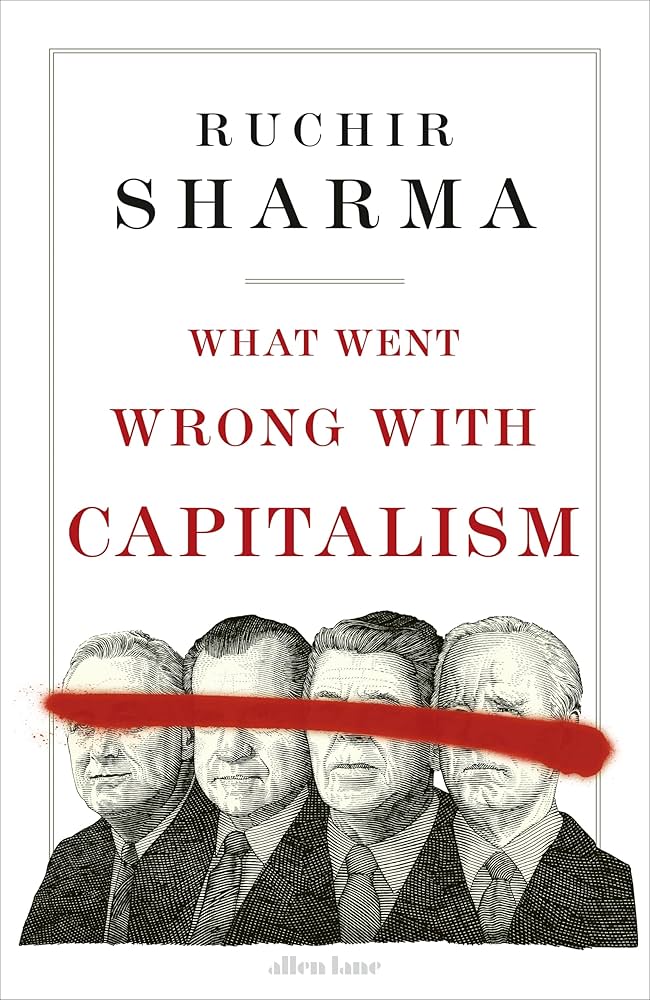
We have witnessed thirty years of neo-liberal triumphalism. Essential services have been privatised, and utilities have been sold off, while the state has seldom been so weak, and, as a result, work has become more precarious, inequality has widened to unacceptable levels, and a super-elite of mega-rich plutocrats has been allowed to grow wealthier and wealthier at everyone else’s expense. The liberal-left has so successfully established this prevailing narrative about what is wrong with modern capitalism, and how only a stronger state can fix it, that even many of its natural opponents buy into much of its analysis. Ruchir Sharma’s analysis, however, is here to make a simple point. They are completely wrong. Modern capitalism is indeed in bad shape, he argues. But not because the state is too small, but because it is too big.
What Went Wrong With Capitalism tells a powerful story about how the system of making and selling stuff has changed dramatically over the last fifty years. In Sharma’s view, the conventional wisdom is that the state grew slightly in the immediate post-war period, but its size was dramatically rolled back during the Reagan and Thatcher era, and ever since then has shrunk in size and influence. ‘Millennials, the next ruling generation, have embraced a narrative that is clear on the problems of capitalism and way too certain of the causes,’ he writes. ‘Like the media establishment, many Americans seem to assume that the story of shrinking government is true [and] if these distortions arose in a period of shrinking government, they figure, then bigger government must be the answer. But if the era of shrinking government never happened, that is exactly the wrong answer.’
Sharma brilliantly sets out the stark facts and figures on the ever expanding role of government in the modern economy. While Reagan and Thatcher were preaching the virtues of liberal, small government, low-taxes and free markets, central bankers were moving steadily in the other direction. The rot started with the former Federal Reserve chairman Alan Greenspan, ironically a devotee of the extreme liberal Ayn Rand, who started propping up the financial markets with cheaper money every time they fell a little. Ever since then, central bankers saw it as their job to tame and manage the business cycle. First interest rates were cut too close to zero, and then they started printing money on an extravagant scale, and that allowed governments to borrow to finance deficits on a scale that used to be impossible. As Sharma points out, in America potential Presidents used to pay at least lip service to balancing the books, and Bill Clinton actually managed it in one year, the last occupant of the White House to do so. Now they no longer even bother to mention it, so that by 2024, with a deficit of 6pc of GDP in a strong economy, until recently an unthinkable sum outside of wartime, the candidates compete with one another on how much more they can borrow and spend.
But it is not just debt of course. The state has been intervening more and more directly in the economy as well. In the US, Sharma points out the Code of Federal Regulations was first updated annually in the early 1960s, and has grown more than eight-fold since then, and now runs to 180,000 pages covering 240 volumes. America turned into ‘a nation of lawyers’ he argues, not because its people are naturally litigious, as is sometimes lazily assumed, but because it was the only way to cope with the often bewildering accumulation of extra rules that businesses have to follow. In Europe, it is even worse. Sharma brilliantly nails the myth of a ‘neo-liberal’ European Union, pointing out that all it has done is replace cumbersome national regulations with even more cumbersome versions designed in Brussels. ‘In part because the European Union lacks the power to tax and spend directly, its energies have been directed instead into what scholar Giandomenico Majone called “an almost pure regulatory state”, which by the late nineties was issuing regulations at an almost exponential pace.’ On both sides of the Atlantic, the story is the same, with governments attempting to micro-manage almost every aspect of commercial life. Both the Covid pandemic and now the drive to hit Net Zero targets have massively accelerated that.
The strength of the book is in its forensic use of facts to puncture left-liberal myths, and to chart the increasing role of government in our lives. For example, the number of lawyers in the US was growing by only 30,000 per decade prior to 1970, but increased to 100,000 every ten years after the tide of federal regulation grew and grew. Likewise, the number of lobbyists in Washington has overtaken the number of federal employees, with companies spending vast sums trying to manipulate the law in their favour. Almost every page contains a fresh nugget of data, each one illustrating how much more powerful the state has become. Add it all up, and Sharma paints a devastatingly accurate portrait of how massively the state has grown in size and power over the last thirty years, and more importantly, how that has slowed down the innovation and growth that were vital to a stable, free and prosperous society.
If it has a flaw, it is that the book is weaker on remedies. Sharma identifies Switzerland, Taiwan and, perhaps controversially, Vietnam as the three examples of states that have managed to get it right. They are good choices. The trouble is, voters in all the major democracies keep voting for leaders who promise to intervene more, spend more, and regulate more: Argentina is the only country in recent times to vote for less government. The hard part is to convince the voters that the state should get out of their lives, and while Sharma will convince his readers of the case, he has little to say about how to turn that into a message with mass appeal. Even so, it is an excellent book, timely and well-argued, and essential reading for anyone who wants a refreshing corrective to the prevailing wisdom.
‘What Went Wrong With Capitalism’ by Ruchir Sharma was published in 2024 by Penguin (ISBN: 978-0-24-159576-3). 384pp.
 Matthew Lynn is an author, journalist and entrepreneur. He writes for The Daily Telegraph, The Spectator and Money Week, is the author of the Death Force thrillers, and is the founder of Lume Books.
Matthew Lynn is an author, journalist and entrepreneur. He writes for The Daily Telegraph, The Spectator and Money Week, is the author of the Death Force thrillers, and is the founder of Lume Books.
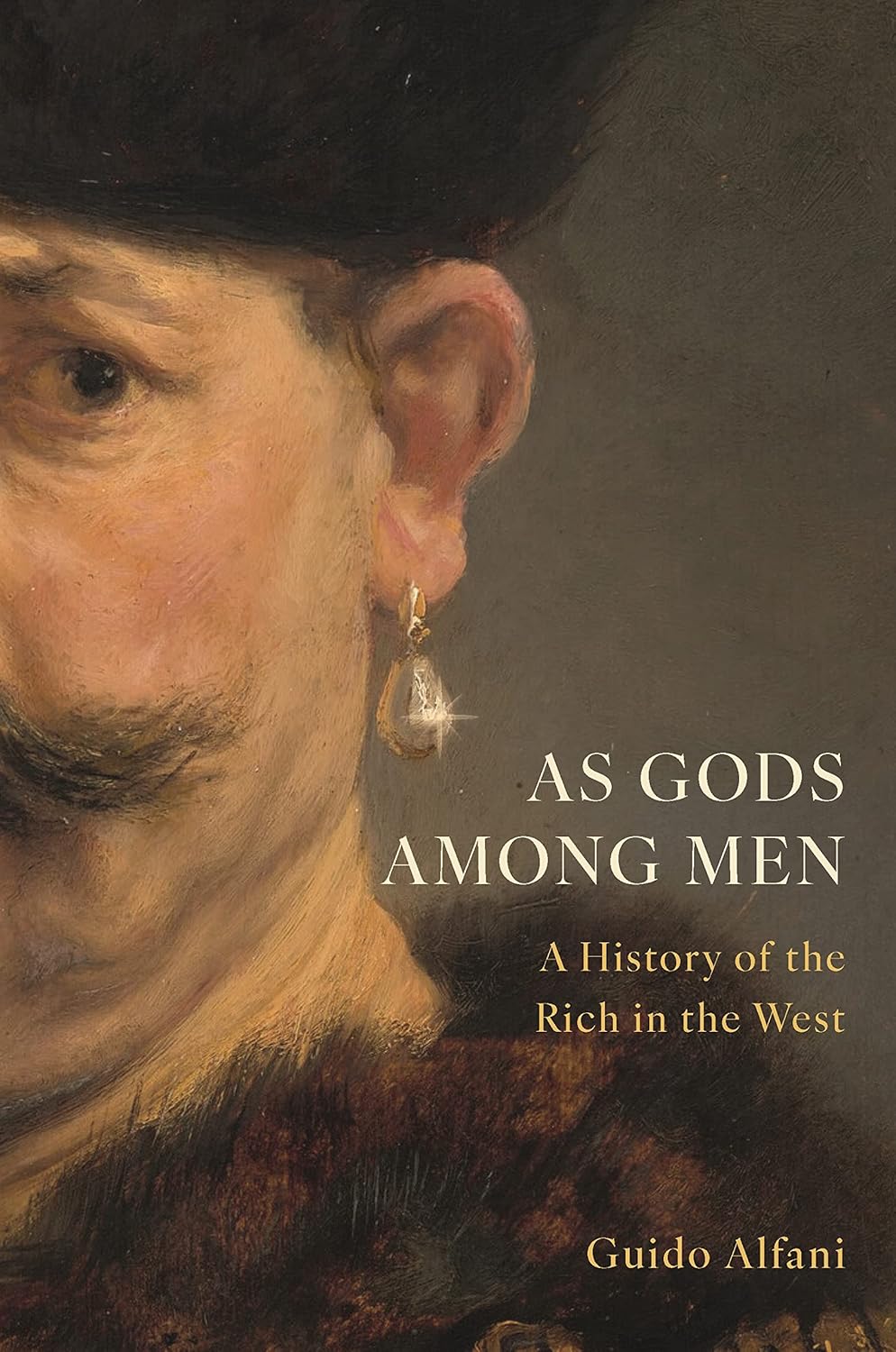
As is perhaps indicated by its title, this is an ambitious book. The author proposes a ‘History of the Rich’ over two continents across a period that just falls short of a millennium. The context for this attempt is set amongst our contemporary western society’s ‘ever growing’ obsession with discussing both the super-rich and celebrity – a phenomenon which is contrasted with that of the Middle Ages, where ‘the rich were required not to appear to be wealthy’ in pursuit of ‘the correct functioning of a perfect (Christian) society and its institutions, especially the political ones.’ (page 1).
The structure selected by the author is tripartite: the first is conceptual, setting out the multiple and daunting issues arising from definitions, demography and data more generally, and an overview derived from the available historical sources – such sources as have given rise to the geographic locus of the study. The second sets out a triform model of ‘Paths to Affluence’; the routes offered are ‘nobility and aristocracy’, ‘innovation and technology’, or ‘finance’; these three are combined to enable a review of ‘saving and consumption habits’ over the period; and a concluding summary is offered, focused largely on the post-1900 period. The third and final part considers various perceptions of ‘The Rich in Society’, including wealth as a ‘social problem’, the role of patronage and philanthropy, ‘Super-Rich and Politics’, and finally a sweeping illustration of ‘The Rich in Times of Crisis from the Black Death to COVID-19’. A four-page summary concludes the volume.
This approach raises both some questions and a number of quite daunting challenges. The structure presents a history rooted in a survey of (available) evidence, giving rise to a triple-twisted trunk through which riches are amassed and from which various branches spread out, each hoping to bear distinctive fruit in the form of key aspects of ‘the rich’ across eight centuries. The very first question which strikes the historian (particularly a socio-economic historian) is whether that evidence can support such a structure. The bare minimum for such an attempt would have to include useable data sets on both individual ‘riches’ and the overall ‘riches’ of the society or nation in which the individual acted, and accurate estimates of the population of that society. Ideally this would be comparable across multiple societies both within the geographical area of the study and over the period under study. Not one of these necessary conditions prevails. While the very short sub-chapter on historical sources acknowledges the multiplicity of ‘intrinsic difficulties’ (page 32), it is not until Part 2 that the reader is presented with the broad trajectory of the evidential base (page 40) which reveals a scarcity of data points amounting to a dearth. The kingdoms selected are England, ‘Germany’, Naples, Venice, and the Sabaudian States, across which less than twenty data points are dotted in over various dates from 1300 to 1800; this is repeated for both an estimated 5% and 1% of the respective populations. Yet historians lack accurate sources to create population totals: England may be one of the better served with the unique Domesday Book profiles of community wealth in 1086, but there was no further attempt at a national census for over seven hundred years, until 1801. But the challenge of societal population estimates of early modern societies pales into insignificance against that of estimating the wealth of their communities – the datum essential to understanding the allocation of that wealth in a discrete percentile distribution. As every historical demographer knows, our understanding of populations across geographies over time is shaky at best; Peter Lindhart has been quoted as suggesting that recent studies on early modern England allow us to offer ‘to replace [Gregory] King’s old rough tentative guesses with new rough tentative guesses’.[1]
In the absence of accurate evidence to assess individual wealth, societal wealth or population size, the prevalence of percentages quoted to illustrate the argument are unconvincing at best, while the fractions of a decimal are superfluous. While sources are given (page 321), the absence of data tables and the acknowledged deployment of shifting definitions are problematic: wealth and affluence, ‘the rich’ and ‘the super-rich’ are used interchangeably; estimates are based upon individual wealth, familial wealth, property tax-derived estimates and moveable wealth submissions and more; with an assumption that each possesses sufficient equivalence to enable the arguments to proceed. The author attempts to reassure that ‘dishomogeneity [sic] in the data is dictated by the sources and a well-known feature of many comparative studies of wealth distribution’ (page 33); while this may inevitably be the case, it fails to dispel the shadow of unease under which the cautious reader proceeds.
Leaving to one side the unsurmountable challenges presented by the statistics, the principal line of argument deserves attention. The trichotomy of wealth originating in aristocracy, innovation or finance would appear to diminish the essential contributions of the monopolistic mercantilism which characterised the international commerce which brought many individuals into both the first and third categories. The role of the western Christian Church (significantly Catholic for the first half of the survey, arguably equally Protestant towards the later part) is also strangely sidelined. The author claims that Scholastics taught wealth was a sin: yet in the principal work cited, Aquinas follows Augustine (indeed, Abelard) in carefully adopting a largely intentionalist ethic in which the motivation of the accumulation of wealth is all important.[2] Certainly the Church was widely regarded during the vast majority of this period as a repository of wealth: the Fraticelli were declared heretics in 1296 because their vows of poverty stood contrary to the Church’s central role in banking, while England’s Henry VIII’s famous dissolution was in principle no different from Louis VII’s instruction to French regent Abbot Sugar for funding for his Second Crusade: ’sive de nostro seu de vestro pecuniam sumptam nobis mittatis’![3]
Such a morally neutral conception of wealth is not shared by the author, who states at the outset that with regard to inherited wealth ‘…fiscal systems could, and probably should, have a role in ensuring an acceptably even playing field’ (page 5). Indeed, this represents the recurring theme of the volume: that the unarguably persistent inequality of wealth distribution (be it never so accurately measured) should be redressed as a primary objective of social governance. And while it is clearly a weakness that the claim that such inequality has only worsened over time (the evidence supports a theory that it fluctuates), this central belief is worthy of consideration. It is therefore important that quantitatively the most significant factor in social demographics over the period is almost totally sidelined: that of the growth in population. It is stated that one of the very few drivers of an increase in equality over the last millennium was the Black Death, which some have estimated wiped out half the population of Europe (perhaps some fifty million people); however accurate this may be, the explanation that subsequent wealth inequality was addressed by an increase in real wages would seem to ignore the basic fact that there was more to go around fewer individuals. The reader is invited (page 59) to ‘imagine a cake that shrinks in size, while the number of exceptionally hungry guests at the party continually increases – soon the other partygoers will get only crumbs’: one could also imagine a cake that remains unchanged, while the number of guests halves. The absence of analysis on this point, and the preference for pursuing other avenues, is a missed opportunity. Demographic historians would prefer to examine an explanation of inequality which accounts for the effect of a European population which increased by some eight million each century from 1200CE to 1700CE, but then added fifty million people by 1800 and a further two hundred and fifty million by 2000CE.
The fruits of this tree as presented in each of the chapters and sub chapters are beyond the scope of a review; however, a determined preference to outline a selection of justifications for fiscal implications is characteristic of the latter half of the volume. Indeed, ‘It’s Taxes or Pitchforks’ could well have served as a sub-title and not merely as a quotation confined to the conclusion. What is rather less obvious is that ‘all the historical the evidence…[supports the proposition that] the position of the rich in western societies is intrinsically fragile” (page 317). In the face of their continuity displayed over the last millennium (not to mention those preceding) this would seem a curious statement, and using a definition of ‘rich’ deployed in the preceding chapters (that of income twice the median) one that is empirically somewhat awkward to sustain.
Ultimately, the historian is forced to consider themselves somewhat disappointed – instead of a history, we have content which is substantially a series of essays reflecting upon the author’s selection of aspects of ‘richness’, considered over discrete epochs. A taxonomy setting out a variety of attitudes towards richness could have been simultaneously less ambitious and far simpler to evidence, even if conclusions were as speculative as they were scientific. This might have best been delivered through a chronological approach, offering a more traditional way to illustrate the development of the attributes over time, and identify any trends. Certainly, this would have enabled the kind of sequential treatment more expected from a ‘history’.
Finally, one has to wonder if a collaborative approach might not have allowed the content to deliver more authority than a monograph. The period under consideration is vast, and deserves more than a single volume. To have heard from historians perhaps more familiar than the author with the nuances of the past millennium, each considering how specific aspects within the study had developed, could have added some academic rigour. Certainly the bibliography would have gained: whilst there is no reference to Abelard, Anselm or (St.) Augustine, and but a single nod to Aquinas, there are no less than thirty-four of the author’s own publications cited in the bibliography under the letter ‘A’, with copious further references in the remainder of the alphabet. This unfortunately gives an air of confirmation bias to a work which at times reads as a selection of model essays to accompany an undergraduate course taught by the author.
Ultimately, given the immensity of the scope, the difficulties with data, and the thematic complexity, one cannot help wondering if the volume was well-conceived: when Robert L. Heilbroner broke the ground in this field with his (still useful) Quest for Wealth, it was a work of significantly lesser ambition (and one apparently not considered in this study). Were the author familiar with this pioneering work, there might have been some resonance in the earlier writer’s reflection:
‘I became aware of how tremendously complex this seemingly simple and direct idea was. It seemed money led to economics and this in turn to sociology, and thus to anthropology and psychology, and finally on to moral philosophy itself. I was soon aghast at the scope of the undertaking and now, looking back upon it, am not a little abashed at my foolhardiness in attempting it.’[4]
Given the flaws identified in this review, this study, while admirable in purpose, is not something that can be recommended to either historians or the general reader.
‘As Gods Among Men: A History of the Rich in the West’ by Guido Alfani was published in 2024 by Princeton University Press, (ISBN: 978-0-69-121573-0). 440pp.
[1] See Tom Arkell, ‘Illuminations and Distortions: Gregory King’s Scheme Calculated for the Year 1688 and the Social Structure of Later Stuart England’, The Economic History Review, New Series, Vol. 59, No. 1 (Feb., 2006):p65.
[2] ‘…people seek riches only as useful and a means to other things….Therefore, we should not hold that avarice is a capital sin’ De Malo, Question VIII.18, following Aristotle’s ‘Ethics’.
[3] [whether you send us money taken from us or from you,] in Recueil des Historiensdes Des Gaules et de la France, ed. Martin Bouquet et al. (Paris, 1869–1904) vol 15, p. 487.
[4] Heilbroner, Robert L., The Quest for Wealth – a Study of Acquisitive Man, (New York: Simon and Schuster; 1956), page 253; while this seminal work is not cited, Heilbroner’s definition of wealth in ‘The New Palgrave Dictionary of Economics’ is.
Dr Andrew Fincham is an early-modern socio-economic historian affiliated to Woodbrooke College, University of Birmingham, UK. His research is concerned with understanding the links between religious values, ethical business, and commercial success; and the implications for responsible corporate governance. His current areas of interest include a revision of Quaker historiography and an exploration of the underlying issues in Max Weber’s ‘Protestant Ethic’. He is a Fellow of the Royal Historical Society.
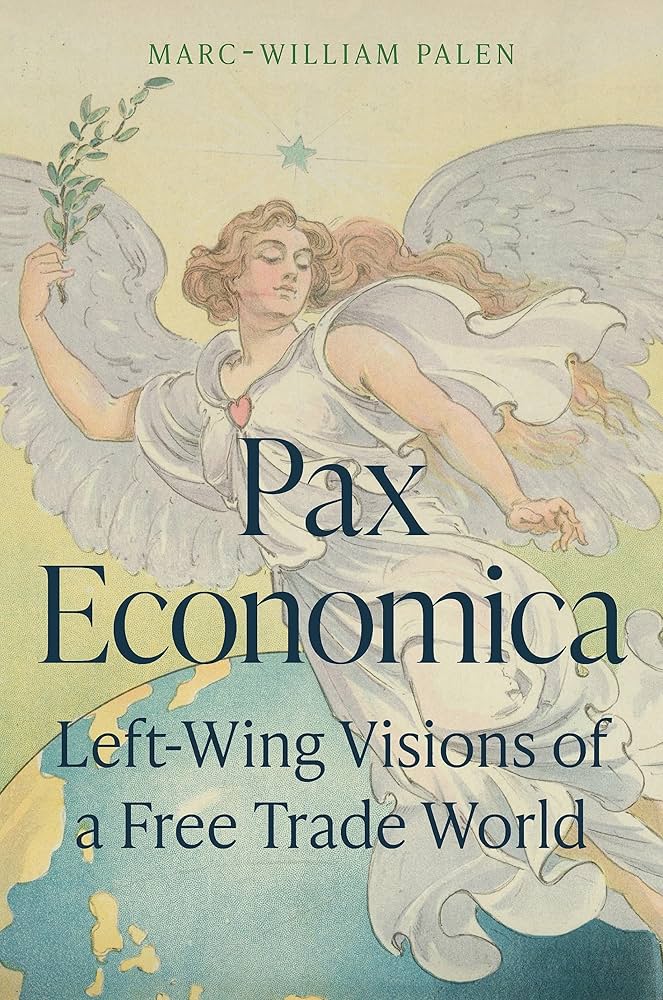
The history of the liberals, radicals, socialists, feminists, and Christians who advocated for free trade as the necessary accompaniment to anti-imperialism and peace is the subject of Marc-William Palen’s Pax Economica: Left-Wing Visions of a Free Trade World. Pax Economica was a term promoted by Jane Addams of the Women’s International League for Peace and Freedom, whose idealistic vision was of such a world after the catastrophe of the First World War (page 199).
Today, free trade is most often associated with neo-liberal economic thought but Palen demonstrates that its origins are rooted in nineteenth-century left-wing politics, with its advocates promoting a heady blend of peace, anti-imperialism, and free trade: a vision at odds with the powerful currents of nationalism, protectionism, and colonial expansion.
The book charts the continuous movements for free trade from the 1840s to the present day. Its scope is broad in time and space, with the core themes often intersecting with major events across the period. The vicissitudes of the drive for free trade as the harbinger of a peaceful world is prominent, and its mutability is closely considered and evaluated.
Palen reveals how, for some of its more left-wing adherents, free trade represented a challenge to imperialism and militarism. In its most idealistic form, it was held that free trade would create international bonds of union, dependence, and harmony which would make war obsolete. Suffice to say, that idealist vision has not materialized.
Nonetheless, the vision of a ‘Pax Economica’ evolved to include supranational regulation, and the establishment of post-1945 liberal institutions such as the United Nations (UN), International Monetary Fund (IMF), and the General Agreement on Trade and Tariffs (GATT) which did meet, albeit insipidly and ultimately disappointingly, their support for global governance and cooperation. Yet Palen’s work is not primarily a history of international institutions but rather a detailed study of the left-wing vision of globalism. In the main, this means a roll call of movements, pressure groups, and individuals, mostly those employing an ‘outsider strategy’ as a means of changing policy. The work is ambitious, immaculately researched, and a timely publication amid the resurgence of economic nationalism and geopolitical conflict.
The text, divided into six chapters, ranges over an extensive landscape, encompassing the anti-imperialism of free trade, Christian pacifism, socialist internationalism, feminism, and Marxism. The idealism conflating free trade, peace, and prosperity is well-delineated, and the intellectual antecedents well-identified and contextualized, with Richard Cobden, Henry George, and Norman Angell referenced throughout in multiple contexts. The geographical diaspora of free trade sentiments is a fine testimony to the vibrancy and durability of these ideas.
The book considers these developments, broadly defined, with short-hand organizing themes such as the ‘Marx-Manchester’ and ‘Marx-List’ traditions. Continuity of struggle and complexity of the tasks are keynotes of the work, from the battle against the systemic protectionism of the 1840s to the current disputes over trade liberalization and neoliberalism.
Indeed, divisions over the legitimacy of free trade principles were explicitly made with the publication of Friedrich List’s National System of Political Economy as early as 1841 at the height of the campaign for economic liberalization in Britain. Economic nationalism, as a counterpoint to free trade, features prominently, with List’s ‘infant industry’ framework and the ‘American System’ of Alexander Hamilton appearing equally, if not more, historically important, in the commercial policy of nations. The idea of tariffs as a shield against foreign competition, and more positively, as an economic development strategy, proved highly influential in the United States, Canada, Australia, Germany, and even Britain.
Free Trade has always been presented in many different guises, and Palen effectively demonstrates that it is intersectional and situational. It could be a liberal, socialist, or anti-colonial force, for the variegated ‘productive profile’ of nations meant it possessed different connotations and meanings on a country-specific basis. While viewed as a liberating measure in Victorian Britain, the same policy preferences led to it being considered by less-developed countries, such as India, Ireland, and China, as a tool of economic imperialism, used against territories which had ‘suffered under the yoke of British free-trade imperialism’ (page 109). Conversely, protectionism, while historically often reflecting the dominance of political and business elites, was often considered, especially in recent times, integral to the economic development of emerging states, and in anti-colonial national struggles. Hence the terminology of ‘Marx-List’ and ‘Marx-Manchester’ traditions as a way of understanding political economy preferences via national subjectivities and economic complexities. Undoubtedly owing to constraints of space, the book does not go far in its forensic analysis of divergent commercial policy preferences, and a particularly notable omission is the extent to which policy preferences were influenced by the fiscal demands of increasingly democratic electorates.
Chapters on free trade feminism and Christian pacifism demonstrate the continuing influence of Cobdenite ideas into the twentieth century. The final chapter takes the story up to the present day, charting the post-war Bretton Woods system, and the triumph of the Pax Americana and neoliberalism, with the caveat that economic nationalism aligned with infant-industry strategy continues to challenge the long-standing association between equity and free trade. Argentina is usefully highlighted as a case study of a nation adopting a growth strategy informed by Listian and American System ideas as ‘economic blueprints’ for development (page 196).
In a divided and unequal world, an absolutist stance for free trade has often been construed as entrenching inequality. Interestingly, free traders often reconciled these Global South infant-industry strategies as a rational, though hopefully temporary, response to Western neo-liberalism, which preached free trade but practiced protectionism. Most notable in that respect, despite the guiding principles of Reciprocity and Non-Discrimination promoted by the World Trade Organization, is the recent surge of regional trade agreements delimiting and protecting rather than expanding market access.
In some ways, the timing of the book’s publication in 2024 was unfortunate, and the idea that the ‘neo-liberal order has been placed on notice’, appears chimerical. With rising global geopolitical tensions, and war in Ukraine and Gaza, any notion of Pax Economica appears unlikely (page 222).
Nonetheless, the analysis within the book is broad-ranging, conceptually coherent, and highly informative. A particular strength is the ability of the author to convey the changing nature of free trade movements, yet while the breadth of the study is highly impressive, it does necessitate a sacrifice of depth in places.
The book is primarily an intellectual and institutional history with a plethora of organizations, acronyms, and an eclectic array of individuals. At times, it would have been useful to know how popular many of the cited organizations were, and how long they lasted. Some readers may find the numerous terms, ideologies, adjectives, and acronyms difficult to follow. Equally, the thematic approach means there is some reiteration and repetition.
Nomenclature is a little odd at times, with John Bright described as an ‘antislavery activist’ and Cobden as an ‘opponent of slavery’ (page 155). It is not that these descriptions are inaccurate but that they convey a limited view of individuals whose backstory is much wider than suggested by the description. There are also some contentious points, such as the claim that the Manchester School ‘envisaged the gradual decline of the nation-state, and with it the elimination of national rivalries and trade barriers’ (page 97). Despite its purported universalist and utopian principles, there existed many, maybe even Cobden himself, who supported free trade at least partly because it aligned with vested class and/or national interests. Self-interest could co-exist with or even be disguised by idealism. Indeed, trade agreements today, such as the USMCA, are examples of managed and negotiated free trade, which are a far cry from the voluntarist model promoted by free trade idealists portrayed within the book.
At times the book appears a somewhat breathless account (indicated by 65 pages of notes and a 20-page index) in covering so many events, times, and places but there is much to be gained from a close and careful reading of the text.
In sum, the book will interest scholars and general readers. It follows the tradition of ‘broad sweep’ history, informed by a considerable body of research and synthesis, and as such is thought-provoking, engaging, and interesting to read.
‘Pax Economica: Left-Wing Visions of a Free Trade World’ by Marc-William Palen was published in 2024 by Princeton University Press (ISBN: 978-0-69-119932-0). 309pp
 Gordon Bannerman is a professor teaching Business History at Wilfrid Laurier University and the University of Guelph-Humber, Ontario. His primary research interests focus on modern British political and economic history.
Gordon Bannerman is a professor teaching Business History at Wilfrid Laurier University and the University of Guelph-Humber, Ontario. His primary research interests focus on modern British political and economic history.
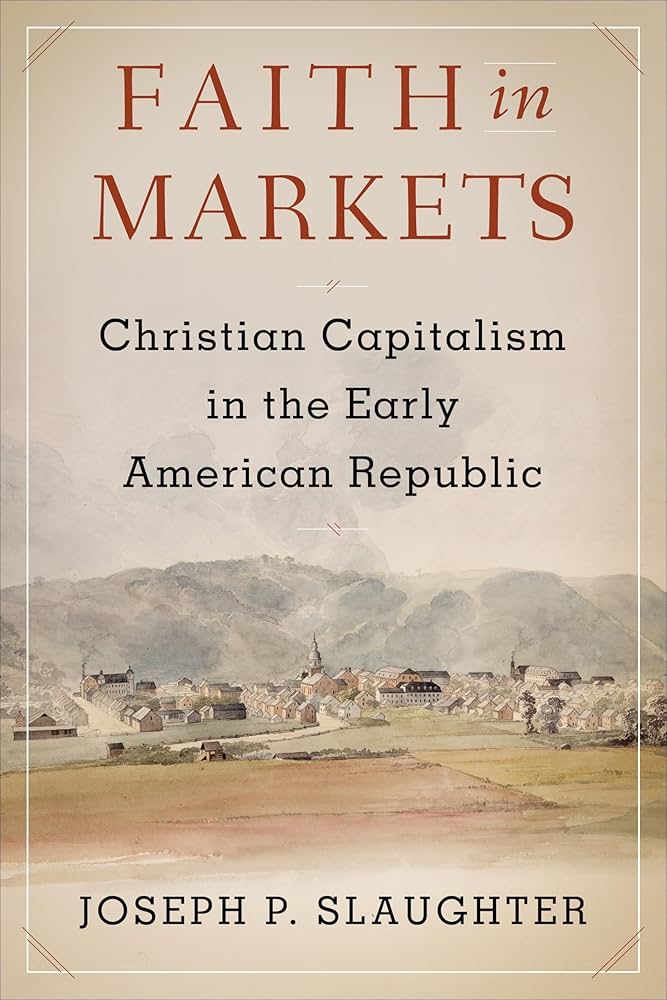
In this deeply researched study, Joseph Slaughter describes the organization, economic power, and cultural impact of three different Christian businesses in pre-Civil War America. He calls attention to the underappreciated of role of Christian enterprise in the development of capitalism and points to descendants of his three examples among evangelical businesses today.
Harmony is Slaughter’s first example. Under the zealous authority of George Rapp, the community of German Lutheran immigrants dominated textile manufacturing in several parts of Pennsylvania and Indiana in the 1820s and 1830s. Harmonists were not always welcome neighbors. With cotton mills, silkworm farms, and new steamboats, Harmonists competed for markets and resources with more efficient organization and more aggressive fiscal operations than their neighbors.
Expectations of Christ’s immanent return contributed to their work ethic and separatism from ordinary society. Rapp’s commune was laying the groundwork for Christ’s return, and the new millennium Christ would inaugurate. With that prospect in mind, community members worked as a unit with strict rules and a strong leader, apart from the allegedly corrupt world of their neighbors.
The Pioneer Stagecoach Line is Slaughter’s second example. In contrast to the separatist piety behind Harmonist enterprise, the Sabbatarian business led by Josiah Bissell, Jr. sought reform and moral improvement throughout American society. Unlike other stagecoach lines in upstate New York that ran seven days a week, the Pioneer Line stood firm against the sin of work on Sundays. Funded by Calvinist Presbyterians and Congregationalists, with cooperating inns along the line to accommodate rest and worship on Sundays, the Pioneer Line aspired to hold all Americans to the nation’s covenant with God, modeled on that of ancient Israel.
The Line enjoyed some initial success. Only a year after its inception in 1828, it commanded two-fifths of the market for stagecoach travel in the busy region around the newly opened Erie Canal. But this success was short-lived. While some riders welcomed morally upright travel, Josiah Bissell’s aggressive sanctimoniousness irritated others, making him a butt of jokes. The Line also struggled to find and retain experienced, cooperative drivers. It went out of business in the early 1830s.
Slaughter’s third and most compelling example of Christian business success is Harper & Brothers. Founded by four siblings and staunch Methodists, Harper’s grew from a printing business into the foremost publishing enterprise in pre-Civil War America. Headquartered in New York City, Harper & Brothers struck it rich with the Illuminated Bible they published in 1846, followed by the popular Harper’s New Monthly Magazine, first published in 1850 and still in print today under an amended title. Harper & Brothers is the most lucrative, expansive, and long-lasting of Slaughter’s examples.
In Slaughter’s typology of Christian businesses – Pietist, Reform, and Arminian – Harper’s exemplifies Arminianism, a theological term for belief in the free will often associated with Methodism. As an expression of their investment in free will, the Harper brothers approached their book and magazine business as means of encouraging virtue in individuals through helpful reading. The Harper Brothers engaged with individuals in the world around them, unlike the Harmonists whose Pietism demanded separation from the corruption of their neighbors. And unlike the challenge to Sunday travel posed by Sabbatarian stagecoaches, Slaughter characterizes the Harper’s Arminian enterprise as an effort not to Reform the world by challenging its immorality but to redeem the world through individual persuasion.
The great contribution of Slaughter’s book lies in his attention to three examples of Christian enterprise in the early United States, never studied as thoroughly before, or sufficiently appreciated for the varying degrees of economic and cultural influence they exerted. That said, Slaughter’s case for the importance of Christian enterprise in pre-Civil War America rests mainly on the shoulders of Harper & Brothers. While some conservative Christians complained about Harper & Brothers’ openness to fiction, and some intellectuals complained about the Brothers’ lack of interest in serious new literature, Harper publications played a major role in shaping the reading culture of nineteenth century America.
The relationship between the Harpers’ Arminianism and the emerging culture of American consumerism merits further discussion. Slaughter invites but does not pursue discussion of religion’s contribution to consumerism, and the prominent role of Methodism and its offshoots played in shaping and propelling its development.
There is also more to be said about the impact of economic and industrial development on Christian life in the early US. In his fine-tuned descriptions of industrial innovation at Harmony, the Pioneer Line, and Harper Brothers, Slaughter invites discussion of industrialism’s influence on American religion but does not develop it.
With respect to Slaughter’s claim that, “the role played by CBEs (Christian business enterprises) offers an alternative to the competing narratives of the Social Control and Democratization Schools” of American religious history, I would disagree. Slaughter’s examples point not to a third and alternative narrative for American religious history but rather to an interesting combination of social control and democratization.
It is difficult to imagine a stronger example of religion as a form of social control than George Rapp’s community. He ruled Harmony with a firm hand, organizing his people as if they were cogs in a machine, with each adult assigned to one specific task to be repeated perfectly. Rapp organized children as well, tasking them with powering mills and gathering worms.
The Reform stagecoach line established by Josiah Bissell can also be appreciated as an effort at social control. Bissell wanted Americans to observe the Sabbath as he thought it should be observed. His Pioneer Line was created to reform the business of American travel, based on the principle that Sabbath observance was fundamental to Christian life and to the nation’s upholding of its covenant with God.
With their commitment to reading as a means of persuading individuals toward virtue, Harper & Brothers falls more easily into a democratization narrative about American religious history. But the Harper’s story also shows how democratization and social control could be overlapping. The Harper story supports a democratization story in which a religious business is able to shape society precisely because it is more indirect, and more respectful of individual will than Pietist or Reform business.
Through the triumph of Arminianism outline in this book, Faith in Markets points to the integration of familiar and often competing narratives of social control and democratization. Evidence of that integration can be seen in the trajectory of Christian enterprise that Slaughter’s examples reveal. Readers interested in US economic history will enjoy this book, as will readers interested in the interplay of religion and American business.
‘Faith in Markets: Christian Capitalism in the Early American Republic’ by Joseph P. Slaughter was published in 2023 by Columbia University Press (ISBN: 978-0-23-119111-1). 400pp.
 Amanda Porterfield, Emerita Professor of Religion at Florida State University, is the author of Corporate Spirit: Religion and the Rise of the Modern Corporation (Oxford University Press, 2018).
Amanda Porterfield, Emerita Professor of Religion at Florida State University, is the author of Corporate Spirit: Religion and the Rise of the Modern Corporation (Oxford University Press, 2018).
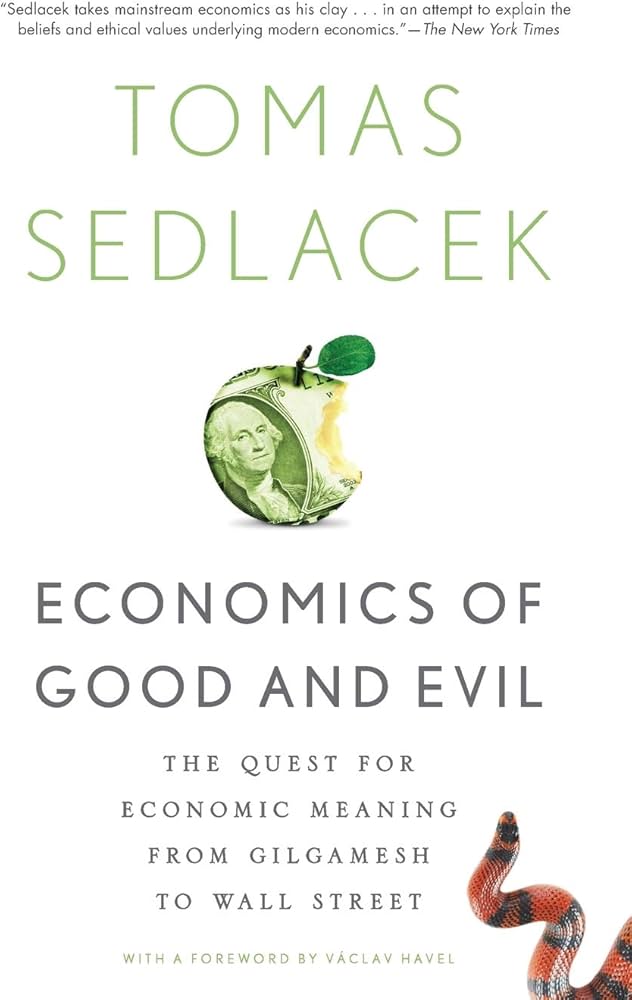
Economics of Good and Evil was originally published in Czech in 2009. Since then, it has been translated into 22 languages and, following its publication in English in 2011, it achieved something close to ‘bestseller’ status and made its author, Tomas Sedlacek, famous. Well over a decade on, it is worth asking whether the book has passed the test of time and justified the hype to which it was subjected. Sadly, the answer is, probably not.
Sedlacek says that the purpose of the book is ‘to look for economic thought in ancient myths and, vice versa, to look for myths in today’s economics’ (page 4). He adds that he seeks to ask four questions: ‘Is there an economics of good and evil? Does it pay to be good, or does good exist outside the calculus of economics? Is selfishness innate to mankind? Can it be justified if it results in the common good?’ (page 7). However, the book in fact ranges far and wide over any number of issues that Sedlacek considers relevant to his enquiry, including the history of economic thought, ethics, epistemology, metaphysics and psychology. The first two-thirds comprise seven chapters focused on various strands of philosophy and religion to the extent that they are relevant to economic issues, starting with The Epic of Gilgamesh and ending with Adam Smith, and the issues discussed range from attitudes to work to the nature of truth.
Cutting through the detail, Sedlacek’s basic thesis is that the modern view that economics is ‘a mathematical-allocative science’ (page 4) is both an historical aberration and fundamentally wrong. He repeatedly reassures the reader that he is not opposed to mathematical economics in principle but he suggests that ‘contrary to what our text books say, economics is predominantly a normative field’ (page 6). In particular, he suggests that all economics is value laden and that we should be careful to examine the ‘many unexplained factors behind the scenes’ (page 275), a task which he refers to as ‘meta-economics’.
Although Sedlacek on occasion overstates his case, his basic argument is surely correct: if we are to confine economics to those matters that are purely descriptive and can be analysed by means of mathematical models, much of what is today termed economics would have to be redesignated; in fact, economists, whether overtly or implicitly consider goals and weigh desirable against undesirable consequences of actions, which necessarily requires the application of underlying values. Furthermore, even to be an accurate descriptive science, economics needs to have regard to matters, such as human psychology, that lie far beyond the precision of mathematics.
Sedlacek is likewise right in warning of the danger that the conclusions of economics may be implicit in hidden assumptions and, specifically, in challenging the concept of ‘utility’, suggesting that it is either tautologous (i.e. an assertion that people will maximise those things that they consider to be of worth) or wrong (i.e. an assertion that people only pursue purely economic goals).
He also challenges what he views as the modern obsession with economic growth, suggesting that ‘Material progress has become, in many ways, the secular religion and a major hope of our times’ (page 234). The danger of attacks of this kind is that they can easily lapse into a romanticism that ignores the enormous benefits of material progress. However, Sedlacek avoids this trap, recognising that ‘the pursuit of progress has enabled real progress’ (page 139). He suggests that ‘The solution we might seek is therefore not asceticism, but rather Sabbath economics’ (i.e. a more balanced approach that addresses a broad range of human wellbeing, page 244).
Sedlacek’s history based approach is helpful in relation to this. As he says, ‘History of thought helps us to get rid of the intellectual brainwashing of the age, to see through the intellectual fashion of the day, and to take a couple of steps back’ (page 4). Furthermore, some elements of his discussion of the relevant history are fascinating in their own right, including his discussion of the remarkable, sophisticated economic analysis of the Greek philosopher and general Xenophon, and his disentangling of the approaches of Mandeville and Smith, culminating in his suggestion that much modern economics is closer to Mandeville’s amoral views than to Smith’s moral philosophy. His analysis of different philosophical systems also allow him to pinpoint questions that are often not asked in the modern world (e.g. is it possible that, as the Bible implies, ethics can impact the economic cycle?).
There is thus much to commend in Economics of Good and Evil. However, the basic argument of the book is wrapped in a web of other material that distracts and confuses the reader and is in many respects, at least, highly contentious. A significant proportion of Sedlacek’s discussion of religious thought comes within this category, although it also contains a number of insightful comments.
Subscribe to receive book reviews by email!
Some of these wrong or contentious statements are irrelevant to the main argument of the book (e.g. his suggestion that the concept of the ‘Kingdom of God’ is not to be found in the Old Testament – it is [see, for example, Psalm 45:6] – and his apparent belief that the Old Testament commands hatred for enemies – it does not) and some are simply silly misunderstandings (e.g. his apparent failure to recognise that the statement that ‘Almost all real numbers are irrational’ [page 285] is not a statement about the relationship of certain numbers to reason). However, some of the book’s other defects are more serious.
Sedlacek is prone to overstatement (e.g. ‘our modern economic theories based on rigorous modelling are nothing more than … meta narratives retold in different [mathematical?] language’, [page 5]) and he uses language loosely without clearly defining his meaning. In particular, he is imprecise in his use of the terms ‘good’ and ‘evil’ (a significant failing having regard to the title of the book!) and sometimes speaks in riddles (e.g. ‘Man is naturally unnatural and unnaturally natural. We’re more natural when we aren’t natural’ [page 324]; ‘If I’ve written about what we should abandon, the question of what to return to should come more easily. The answer appears to be as follows: Step down from Babylon’s ivory tower before the confusion of languages [no one understanding anyone or anything] is completed’ [page 328]). He is also guilty of significant leaps of logic, tends to assert things without careful argument and, most significantly of all, adopts highly contentious philosophical positions.
He admits that his approach is post-modern and this is very evident in his treatment of truth (e.g. ‘What is truth? What is the nature of truth? Does truth lend itself more readily to scientific enquiry or is truth more of a poetic issue?’ [page 299], and ‘Facts and “objective reality” are fuzzy’ [page 301]). He also suggests that reason and emotion are ‘two poles of the same continuum’ (page 312) and he adopts a thorough going nominalist metaphysical position (e.g. ‘Mathematics is a purely abstract creation of our minds – nothing more nothing less’ [page 292], and ‘the world itself does not contain [mathematical concepts] [as it contains no other abstractions]’ [page 310]). The overall result is that his philosophy proves to be lacking in firm foundations.
Sedlacek admits that ‘this is not a book of answers’ (page 330) and, in reality, all that he has done is to provide good reasons for treating economics as being something rather more than a positivistic mathematical exercise. He is right that the psychological, philosophical and ethical dimensions to economic questions need to be recognised. Human beings cannot be described in mathematical equations and values and ethics are critical to both the exercise of defining the kind of society that we want and seeking to establish it. However, this task does not require that we buy in to Sedlacek’s philosophical approach, which is in any event too vague to be useful.
‘Economics of Good and Evil: The Quest for Economic Meaning from Gilgamesh to Wall Street’ by Thomas Sedlacek was published in the English language in 2011 by Oxford University Press (ISBN: 978-0-19-932218-3). 331pp.
 Richard Godden is a Lawyer and has been a Partner with Linklaters for over 30 years during which time he has advised on a wide range of transactions and issues in various parts of the world.
Richard Godden is a Lawyer and has been a Partner with Linklaters for over 30 years during which time he has advised on a wide range of transactions and issues in various parts of the world.
Richard’s experience includes his time as Secretary at the UK Takeover Panel and he is currently a member of the Panel. He also served as Global Head of Client Sectors, responsible for Linklaters’ industry sector groups, and was a member of the firm’s Executive Committee.

The first time that I read a serious academic work about Adam Smith and The Wealth of Nations, I recall being stuck by just how compatible his metaphor of the invisible hand was with the Christian doctrine of providence. It seemed to me then that a project that sought to harmonize the two would be a worthy undertaking. Of course, Smith and his works have been the subject of significant scrutiny and debate by both philosophers and economists, and this has resulted in myriad theories about his own personal religious beliefs and how those religious beliefs may have factored into his work. Some insist that Smith was an atheist, others insist that he was a devout Christian bordering on modern evangelical fervor, with dozens of positions falling in between.
Long takes on this issue with erudition and clarity. The opening chapters provide helpful overviews of several preliminary issues. First, the author surveys the state of the academic conversation that has accompanied a resurgence of interest in Smith. Next, he moves on to summarizing the various philosophical and theological influences on Smith and the various perspectives among scholars as to the nature of Smith’s faith. Only at this point does Long make his own argument regarding the Christian faith and Adam Smith’s thought.
Subscribe to receive book reviews by email
It is important to note that this particular field of Smith studies has been defined by what is known as the ‘Adam Smith problem.’ Given that his two most notable works, Theory of Moral Sentiments and Wealth of Nations, are central works of two different fields—philosophy and economics, respectively—it is easily lost on even academics engaging in one field or the other that Smith’s tone, references, and methodology engage with Christian theology in very different ways. Many within the field have attempted to bridge the gap and provide a universal theory that harmonizes the two approaches. Frankly, my own engagement with Smith has been quite siloed, so I found Long’s discussion of this issue to be quite helpful and enlightening.
But, who cares? Are Smith’s theories any more or less helpful as a result of the role that religion played in his own thinking and intellectual formation? Prior to engaging in his own analysis, Long argues that it does matter: ‘side-stepping…Smith’s theism has led to an impoverishment in Smithian studies.’ Only when we understand the origin of Smith’s thought can we appreciate the unitary goal of his writing, which according to Long, ‘is ultimately an attempt to produce a coherence theory of human nature that deals with the tension between altruistic love of neighbour, a Christian interpretation of morality, and the reality of self-love through a complex narrative of unintended human action which is part of a providential plan written into the moral fabric of human relationships.’ Teleologically, Smith’s project is anthropological in nature before it is either philosophical or economic. Understanding it rightly, Long argues, ‘represents a call for contemporary philosophy of economics to return to its source in the moral philosophy which is a complex synthesis of the individual’s moral constitution and the role that it plays in the development of the common good.’
Long convincingly argues that the ‘Adam Smith problem’ is solved by recognizing ‘a unifying philosophical core’ in Smith’s diverse works rather than a common methodology, as others have attempted. According to Long, the ‘underlying and organizing principle is…a particular reading of the human as an ethical person.’ Smith understands people to be moral agents who are complex. Self-interest, a theme in Smith’s work that is often criticized as being incompatible with Christian ethics, can be rightly understood as a complex concept with moral and material concerns interwoven when Smith is read through this lens.
Long asserts that ‘in the world of contemporary economic theory people are reduced to variables in a system of linear algebra and differential calculus.’ While most economists, especially Christian ones, would likely take issue with this assertion, it is undeniable that most quantitative research in the field requires the reduction of complex circumstances, motivations, etc. to very narrow, specific, and measurable variables. The value of this type of research is certain, but also limited. It often provides a snapshot of just one narrow aspect of a much more complex issue. That type of work shouldn’t be abandoned. Long’s proposition, however, is that understanding Smith’s work on its own terms, which includes certain theological and philosophical assumptions, has explanatory power that a ‘ruthless mechanistic system’ simply does not have. A recovery of a right understanding of Smith’s work will provide a framework for understanding the economic decisions made by moral agents who ‘operate in a complex world of interpersonal subjectivity driven by a combination of personal and social motivations and by ethical principles.’
One weakness of many approaches to harmonizing Smith’s works is that many seem to be hampered by anachronisms of one variety or another. Smith wrote before the dawn of modern psychology and died well before the emergence of various religious movements. As a result, attempting to square any of his thought with these subsequent developments presents problems. Long, however, has carefully avoided this. I expected to find some indicators of bias driven by the author’s prior assumptions, but these are absent in this work. His analysis is clear, serious, and without any obvious bias to make Smith ‘say’ what Long might hope he would say. His work is not driven by a desire to land at a place with a particular bent toward or against capitalism or Christian theology, but proceeds from what is commonly known about Smith’s life and influences and remains closely tied to the text of Smith’s various writings. Long has contributed something quite helpful to those interested in the fields to which Smith studies belong.
‘Adam Smith and the Invisible Hand of God’ by Brendan Long was published in 2023 by Routledge (ISBN: 978-1-03-207336-1). 178pp.

Trey Dimsdale is an associate fellow with CEME as well as the Executive Director of the Center for Religion, Culture, & Democracy (CRCD), the educational and cultural initiative of First Liberty Institute. He is also an contributing editor at Providence, a magazine focused on Christianity and international relations. He holds a law degree from the University of Missouri-Kansas City, as well as degrees in ethics and political science.
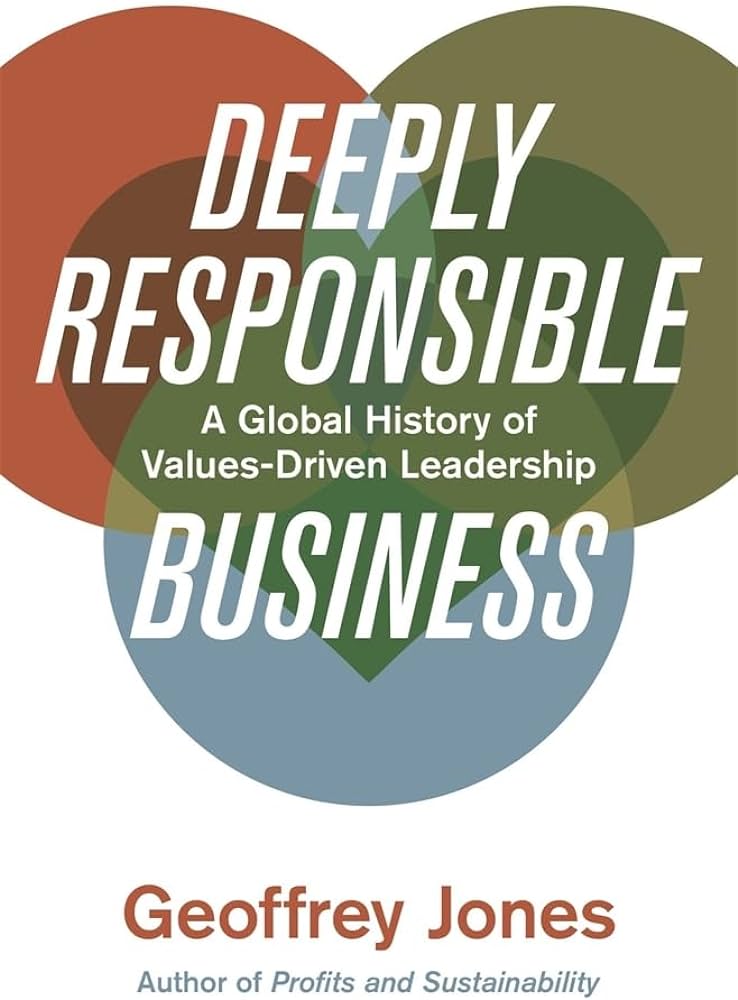
Geoffrey Jones is Isidor Strauss Professor of Business History at Harvard Business School and a fellow of the Academy of International Business. He is the author of several books in the broad field of business ethics from a historical perspective.
The author offers us a fascinating and informative historical review of what he calls “deeply responsible business”, a term which provides the framework for the book but which is, perhaps, slightly overworked.
Jones uses the term “deep responsibility” to characterize the set of values of those “who have seen business as a way of improving society, and even solving the world’s problems” (page 4). He distinguishes his approach from both those who seek to rewrite the rules of the game, as he puts it, and also from the now somewhat discredited approaches of corporate social responsibility (although I could offer some defence of philanthropy in this regard). His central thesis “is that deeply responsible business leaders are motivated by a set of values that shape their practice” (page 5). Some might find that defining characteristic rather weak, but I welcome it, because it enables a proper discussion of values-based business approaches in a realistic way, dealing with character, integrity, wisdom and spirituality, without embracing neo-Marxist opposition to the market economy per se. Indeed, Jones specifically contests any idea that a manager in a for-profit business could never be virtuous.
The book brings several important and significant insights. Its most noteworthy contribution is placing the quest for responsible business into a longer historical view. Jones comprehensively demonstrates that it is not simply a recent phenomenon, but one with a long history that has exercised business leaders since industrialisation. He also helpfully places “deeply responsible business” into a global context, reminding us of the pitfalls of a simply western focus.
The book consists of ten chapters divided into three parts. The first four chapters are encompassed together under the heading “A Question of Responsibility.” Here Jones looks at some significant historical figures in business leadership and history. He covers George Cadbury, Edward Filene (the Boston businessman and pioneer of credit unions), Robert Bosch and examples from India (J.N. Tata) and Japan (Shibusawa Eiichi). This is the strongest, most insightful and interesting part of the book.
The first two chapters tell gripping stories, one of which I am very familiar with, and the other of which I knew nothing about. The first chapter deals with the story of the entrepreneurial Quaker, George Cadbury, who together with his brother, Richard, pioneered a moral approach to business. As Jones argues, given “this emphasis on trust and honesty, it is not surprising that Quaker enterprises became some of the earliest examples of socially responsible business” (page 25). Jones notes the central role of spirituality (here and elsewhere in the book in various forms), the importance of housing, welfare and flourishing of the workforce, the challenges of raising capital and the ownership structure and Cadbury’s wider commitment to the community. Virtue, wisdom and spirituality lay at the heart.
The second chapter was less familiar territory for me but I was captivated by the story. Edward Filene, born in 1860, ran the family retail business in Boston with his brother, Lincoln, and pioneered many business practices. Among his ethical approaches, he introduced employee training, paid high wages whilst seeking to keep prices low and was actively concerned with not only employee welfare, but also employee involvement. He introduced health and illness insurance and banking services for employees. Although Filene did not share their faith perspective, there are several crosscurrents here with the Quakers.
Geoffrey Jones quotes Filene that the purpose of business was to:
“serve people, not merely to support the business man concerned in it. I was not an idealist. I wanted profits. I even had a strong preference for becoming rich. Nevertheless, this discovery of what business really is did strange things to me. It made me want to serve” (page 53).
Of real interest was the story of Filene’s involvement in the development and promotion of the credit union network, which is a much more significant feature of the American financial landscape than, for example, in the UK. He was involved in the 1914 launch of the Massachusetts Credit Union and helped draft a series of eight principles of good practice (page 64). He launched the Massachusetts Credit Union Association in 1921 to promote the idea of credit unions which spread rapidly, although there was always some tension between state and federal provision. Filene was elected the first president of the Credit Union National Association in 1935, with 3,600 credit unions and 750,000 members. Those numbers had grown to 7,500 retail credit unions with 92 million members by 2010.
Part 2, “Turbulence” begins with a fascinating chapter on the history of Harvard Business School and its second dean, Wallace Donham, who had called in 1927 for business leaders to adopt what he called a higher level of responsibility (a further and helpful reminder of placing these ideas in historical context). Further chapters deal with the desire to reduce wealth disparities as an aim of business leaders, consumerism and some other matters. In these chapters the book slightly loses its way. They are the least convincing part of the book and certainly, on occasion, fall into virtue-signalling around business leaders’ personal political objectives and detracted from the really significant insights of the book. In particular, chapter 9, entitled “Social Three-Folding”, seems quite disconnected.
In Part 3, Geoffrey Jones brings us back to more contemporary debates with three chapters dealing with the rise of value driven business right through to the issues around ESG (“environmental, social and governance”) and B Corps. He provides a balanced overview of the strengths and challenges of these movements. He is particularly helpful with his supportive critique of B Corps – though there was no mention of the UK’s B Corp movement, which has made some advances.
In his conclusion Jones reminds us of the reason why his book makes a good and useful contribution:
“As we delved into the history of deep responsibility, we saw many examples of business leaders across time and space who combined making profits and pursuing positive social impact” (page 342).
Jones argues that deeply responsible business will select an industry which does no harm (though that might be easier to define in some instances than others), will engage with stakeholders with respect and humility and support communities. He notes that affecting “a single city might be less glamorous than “reimagining capitalism”, but it can greatly enhance the lives of generations of people” (page 345).
Jones should be congratulated for recognising that a values-based approach to business has a long and honourable history but is not a panacea and that there are weaknesses as well as strengths. In this he is a realist and enhances his overall arguments. He recognises the values which shape character, virtue and spirituality and the need to convince the mainstream of business rather than simply movements on the margin. This is a good book, which I recommend, albeit slightly disappointed with the middle chapters.
“Deeply Responsible Business,” by Geoffrey Jones was published in 2023 by Harvard University Press (ISBN: 978-0-674-91653-1). 431pp.
 Dr Richard Turnbull is the Director of the Centre for Enterprise, Markets & Ethics (CEME). For more information about Richard please click here.
Dr Richard Turnbull is the Director of the Centre for Enterprise, Markets & Ethics (CEME). For more information about Richard please click here.

In Faith in Markets, Benedikt Koehler (PhD), a fellow of the Institute of Economic Affairs, has brought together a series articles that consider the ways in which Christianity, Judaism and Islam have encouraged adherents ‘towards behaviours that tended to market economics’ (page 7). The collection discusses the three major Abrahamic faiths and also a contains a chapter looking at eastern religious traditions more broadly, but the focus in this review is on the Judaeo-Christian tradition specifically. The first part of the book considers the mutual influences of religious practice or belief and the market, with three of the chapters in this section being written by the volume editor himself. One of these shows how the teaching of Moses revolutionised the economic behaviour of the Israelites and was unique in basing economic norms on theology. Extending the Sabbath principle to economic life, together with a ban on usury, Moses implemented what amounted to an egalitarian approach to commerce and a de facto system of welfare. Of particular interest in this part of the book was Koehler’s chapter addressing the development of property rights in early and mediaeval Christianity. This piece provides a fascinating overview of the dispute between the Franciscans and the Papacy on the subject of ownership, showing how Pope John XXII established a view, supported by scripture, that grounded property rights in the divine will, independent of and prior to any rights granted by the state – a view which contrasted with the earlier tendency among both pagan and Christian thinkers to link property rights with human convention. Esa Mangeloja and Tomi Ovaska continue the examination of Christian thought in their discussion of the common-property-based economic and political system of Thomas More’s Utopia, showing that the work is in fact full of economic concepts and that Utopia lends itself to a proper analysis in economic terms, just like other economic systems.
The second part of the book consists of chapters that highlight difficulties or paradoxes in the teaching of each of the Abrahamic faiths as they interpret or apply ancient authorities and again, my focus is on the Judaeo-Christian context. David Conway’s contribution examines the manner in which, by rigidly applying the provisions of the Pentateuch regarding poor relief and education, Israel’s ultra-orthodox communities (Haredim) have created an unsustainable welfare burden for the state. This is the result of low labour market participation caused in part by publicly funded specialist schooling, in which men engage in near-perpetual religious study while ordinarily core subjects such as mathematics are not taught – thus exacerbating the employment problem. This arrangement is traced to the requirement in the Hebrew scriptures that those without means be provided for and that the Levites be supported by a tithe in return for their provision of education in national history and divinely mandated law. As honoured in contemporary Israel, however, these obligations place a huge strain on the public finances and ignore the spirit of the original laws themselves, which favoured economic activity, required recipients of poor relief to work where possible and sought to restore those who had fallen on hard times to economic independence and liberty as soon as possible.
In a very engaging chapter, Martin Rhonheimer considers the subject of social justice, beginning with the modern tendency to use this concept in the criticism of inequalities of wealth. The author agrees with F.A. Hayek, that the notion of ‘justice’ makes no sense when applied to the outcomes of economic systems because they are simply outcomes of a particular order and are not aimed at by any individual or group. However, he adds that it does make sense to talk about the systems themselves as just or unjust, insofar as they are devised or at least allowed to persist by human beings. In short, if the rules of the system are unjust – for instance by discriminating against a particular group such that that group cannot engage in economic activity on equitable terms – then we can change the rules in the interests of fairness. Moreover, we quite legitimately use the term ‘just’ in relation to freely acting individuals, insofar as their actions have some positive bearing on society. Rhonheimer’s point is that ‘social justice’ refers to the social or common good, and we would consider businesses, charities and voluntary organisations who contribute to this as being involved in the exercise of social justice as virtue. Thus, while the term ‘social justice’ might have no purchase in distributive terms (with reference to ‘outcomes’), it certainly can be applied to economic orders, organisations and individuals – and it is here that the tension in Christian thought emerges. Rhonheimer contends that the teaching of the Catholic Church has moved away from an understanding of social justice that is broadly compatible with this perspective, towards a view that is closer to the contemporary ‘distributive’ attitude. As such, it has in recent decades become more inclined to favour redistributive social policies and seems less inclined to take account of the very real benefits of a market economy in contributing to the common good. Thus, the Church’s traditional teaching recognised social justice as a moral virtue from which actions conducive to the common good flow, but we must now wonder how easily this sits with its increasingly ‘(re-)distributivist’ view of ‘social justice’ and the statism that this implies.
Overall, this collection contains several interesting studies and for the most part, the writing is very accessible, though some chapters – such as that considering Utopia – would require a degree of prior knowledge in order for the reader to fully appreciate the proffered analysis. More difficult is identifying a general argument or unifying narrative that runs through the book. The individual chapters have previously appeared in the journal Economic Affairs and some reflect the brevity of the article format, but more significant is the overall feeling that they have not been entirely integrated so as to compose a single, unified volume. As can be the way with edited collections, while each chapter is interesting, the book as a whole lacks a clear sense of overall purpose to pull the individual studies together. Perhaps, however, given the subject, this would be to ask too much in this case. Since it deals with three of the world’s largest religions and is not limited to a particular historical period or geographical region, it would be impossible to give more than a series of studies demonstrating different ways in which the Abrahamic faiths have steered their adherents towards practices that tend to market-oriented behaviours and outlooks. A unified account that shows how this occurred frequently and consistently over the centuries would require a much longer book – most likely in several volumes.
While perhaps lacking a sustained argument to bring the entire book together, as a collection that provides thematically organised snapshots of certain strains of thought and practice within major faiths, while considering tensions that have arisen in relation to market principles, this volume will appeal to those with interests in the overlap between religious and economic thought and practice.
‘Faith in Markets: Abrahamic religions and economics’, edited by Benedikt Koehler, was published in 2023 by the Institute for Economic Affairs (ISBN: 978-0-255-36824-7). 240pp
Neil Jordan is Senior Editor at the Centre for Enterprise, Markets and Ethics. For more information about Neil please click here.